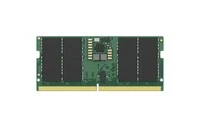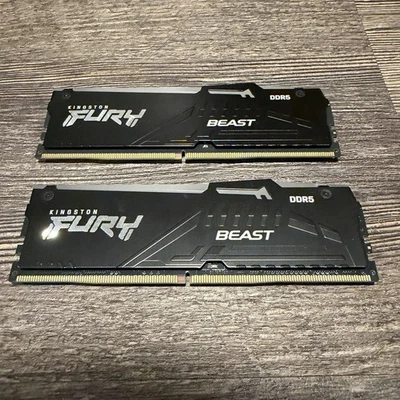Kingston Computer RAM
Shop by category
14,771 results
Sort: Best Match
- Brand New · KingstonRM 100.00RM 20.00 shipping
- Brand New · KingstonRM 95.00RM 20.00 shipping
- Brand New · KingstonRM 64.00Free international shipping
- Brand New · KingstonRM 83.00Free international shipping
- Pre-Owned · KingstonRM 47.87RM 19.15 shippingOnly 2 left
- Pre-Owned · KingstonRM 47.87RM 19.15 shipping
- Pre-Owned · KingstonRM 47.87RM 19.15 shipping
- Brand New · MarkenlosRM 98.29 to RM 371.46Free international shipping1 watching
- Brand New · KingstonRM 246.69RM 68.14 shipping169 watching
- Pre-Owned · KingstonRM 712.50or Best OfferRM 129.73 shipping
- Brand New · KingstonRM 26.95 to RM 247.22Was: RM 87.27was - RM 87.27Free international shipping11 watching
- Brand New · KingstonRM 0.05Free international shipping1 bid3d 23h
- 8GB=4x 2GB, 4GB=2x 2GB, 2GB=1x 2GB , KVR800D2N6/2GBrand New · KingstonRM 27.28 to RM 70.97Free international shipping35 watching
- Generous 30-day return policyBrand New · KingstonRM 602.81RM 90.35 shipping10 watching
- Brand New · KingstonRM 181.87or Best OfferFree international shipping69 watching
- Pre-Owned · KingstonRM 185.05or Best OfferRM 112.02 shipping0 bids6d 10h
- New (Other) · KingstonRM 3,495.16RM 182.33 shipping
- Brand New · KingstonRM 1,019.83or Best OfferFree international shipping
- New (Other) · KingstonRM 168.60RM 121.72 shipping16 bids19h 54m
- Brand New · KingstonRM 156.26RM 121.72 shipping15 bids20h 6m
- Pre-Owned · KingstonRM 122.85Free international shipping12 watching
- Pre-Owned · KingstonRM 4.79RM 71.81 shipping1 bid2d 7h
- Brand New · KingstonRM 123.32or Best OfferRM 64.48 shipping
- Pre-Owned · KingstonRM 956.09RM 103.22 shipping11 bids3d 14h
- Pre-Owned · KingstonRM 616.79or Best OfferRM 93.18 shipping
- Brand New · KingstonRM 1,603.76RM 217.95 shipping
- OC Gaming RAM, Also Compatible with 1000mhz 900mhz 800+Pre-Owned · KingstonRM 81.89 to RM 245.72Free international shipping
- Brand New · KingstonRM 91.66Was: RM 183.30was - RM 183.30or Best OfferFree international shipping22 watching
- Pre-Owned · KingstonRM 47.29RM 94.99 shipping2 bids4h 57m
- Pre-Owned · KingstonRM 86.31or Best OfferRM 36.93 shipping0 bids6d 15h
- New (Other) · KingstonRM 821.99RM 96.80 shipping
- Pre-Owned · KingstonRM 6,168.30or Best OfferRM 285.06 shipping
- Pre-Owned · KingstonRM 136.39RM 62.69 shipping
- Brand New · KingstonRM 1,023.94or Best OfferFree international shipping
- Brand New · KingstonRM 2,051.99RM 133.07 shipping
- Pre-Owned · KingstonRM 95.75RM 19.15 shipping
- Pre-Owned · KingstonRM 410.81Was: RM 456.45was - RM 456.45or Best OfferRM 24.26 shippingOnly 1 left!
- Brand New · KingstonRM 761.82RM 91.91 shipping6 watching
- KVR800D2N6/2G 8GB=4x 2GB, 4GB=2x 2GB, 2GB=1x 2GBBrand New · KingstonRM 20.52 to RM 78.09Free international shipping
- Pre-Owned · KingstonRM 476.16RM 35.60 shippingOnly 1 left!
- Brand New · KingstonRM 2,056.06or Best OfferRM 135.66 shipping
- New (Other) · KingstonRM 1,479.94RM 159.72 shippingOnly 1 left!
- Brand New · KingstonRM 982.82or Best OfferFree international shipping
- Pre-Owned · KingstonRM 57.45RM 19.15 shipping
- Brand New · KingstonRM 1,278.89RM 217.95 shipping
- Brand New · KingstonRM 26.95 to RM 247.22Was: RM 87.27was - RM 87.27Free international shipping14 watching
- Brand New · KingstonRM 863.07 to RM 1,685.51RM 122.26 shipping
- Brand New · KingstonRM 20.56RM 109.96 shipping0 bids1d 16h
- Brand New · KingstonRM 2,047.88RM 217.95 shipping
- Pre-Owned · KingstonRM 62.92Was: RM 69.91was - RM 69.91RM 24.26 shippingOnly 1 left!
- PC3 Overclocking Desktop RAM DDR3 OC 2400MHz 2133MHzBrand New · KingstonRM 119.11 to RM 716.73Free international shipping
- Brand New · KingstonRM 11.97Free international shipping5 bids5d 6h
- Pre-Owned · KingstonRM 966.33or Best OfferRM 103.50 shipping
- Brand New · KingstonRM 832.72RM 120.08 shipping2 bids1d 16h
- Brand New · KingstonRM 94.80Was: RM 189.61was - RM 189.61or Best OfferFree international shipping11 watching
- Brand New · KingstonRM 215.43RM 23.89 shipping0 bids9d 22h
- Brand New · KingstonRM 2,566.01RM 217.95 shipping
- New (Other) · KingstonRM 1,398.11or Best OfferRM 145.04 shipping
- Pre-Owned · KingstonRM 1,028.05RM 102.89 shipping
- Brand New · KingstonRM 285.39or Best OfferFree international shipping
- Pre-Owned · KingstonRM 82.16or Best OfferRM 60.23 shipping
- Brand New · KingstonRM 1,644.88RM 121.06 shippingOnly 1 left!
- Pre-Owned · KingstonRM 80.36or Best OfferRM 91.52 shipping
- Brand New · KingstonRM 843.00or Best OfferFree international shipping






















![[2 Modules] Kingston FURY Beast 8GB DDR4 3600MHz CL17 Desktop RAM KF436C17BB2A/8 - Image 1 of 4](https://i.ebayimg.com/thumbs/images/g/aCMAAeSwIl9pLmxU/s-l400.webp)











































